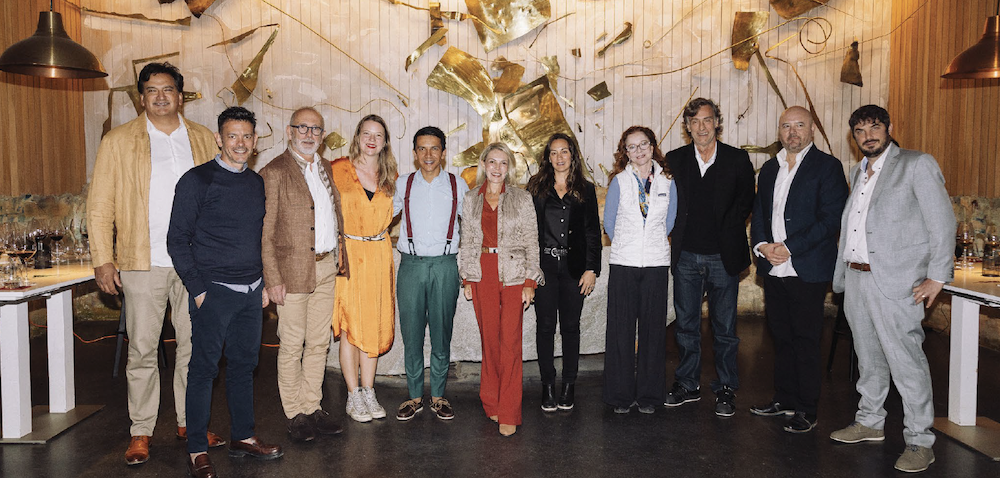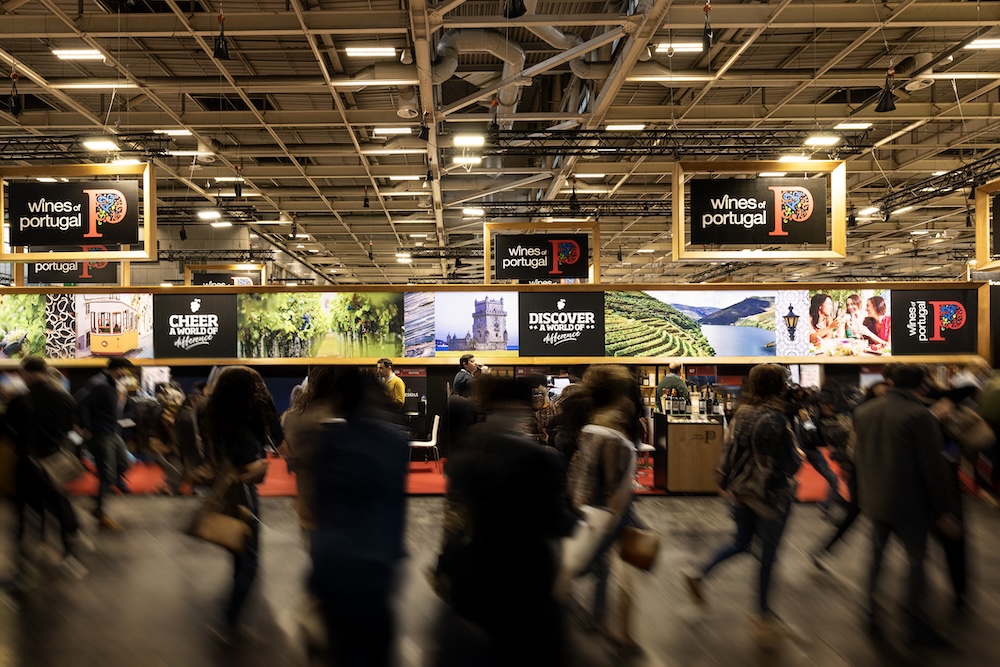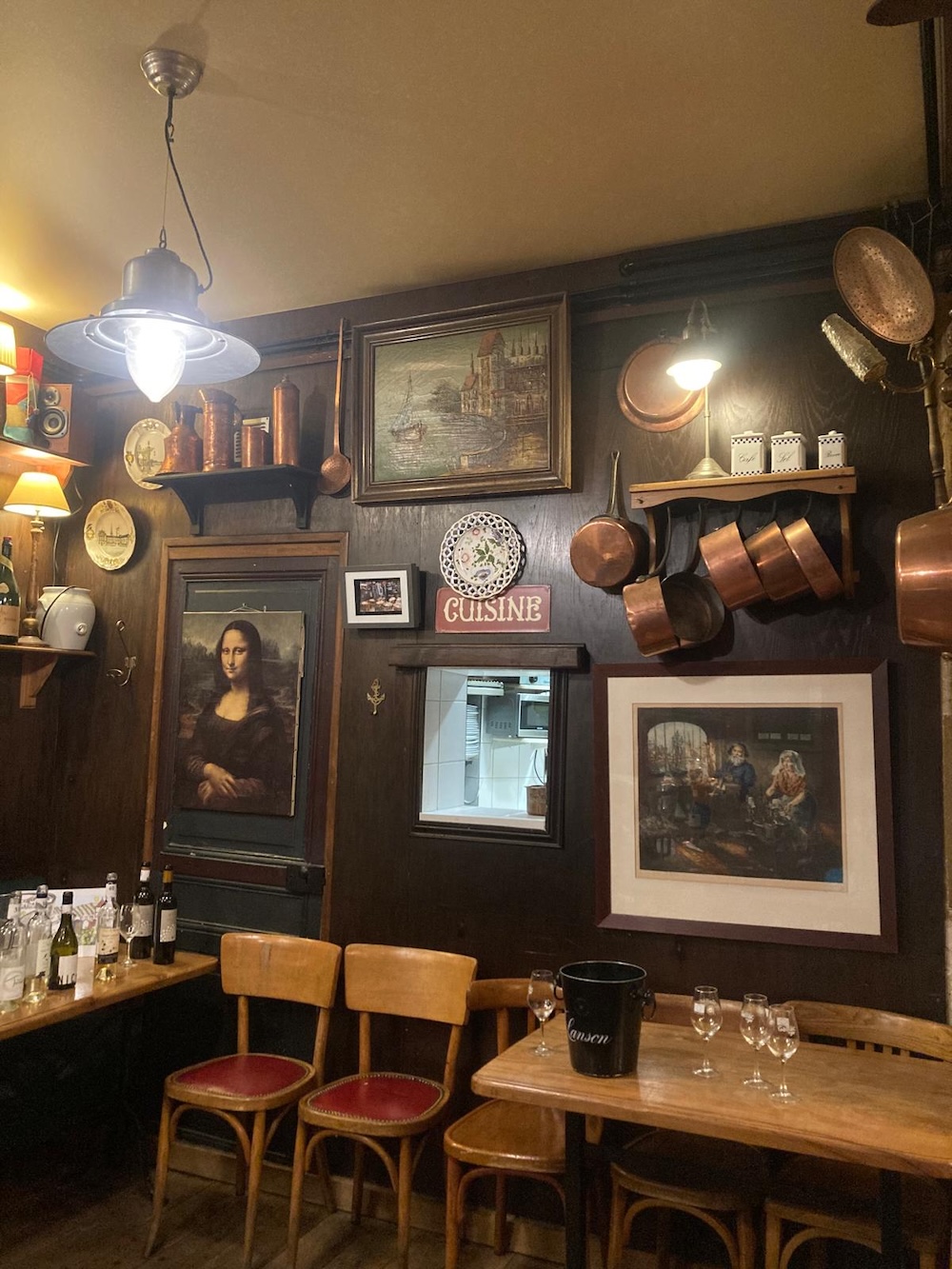
Discovery

Discovery
By Hady Haydamous - Photographs: courtesy of the estates – Hady Haydamous, posted on 18 December 2023
The story of Lebanese wine can be traced back around 7,000 years. There is ample evidence of wine being produced in the time of the Phoenicians, who were excellent mariners and would transport their wines in clay amphorae to every country their boats could reach. But far from resting on its ancient laurels, the present-day Lebanese wine industry is a story of passion, ingenuity, resilience and craftsmanship.
In Antiquity, Lebanon was home to several vibrant cities. Beirut, Baalbek, Byblos, Tyre, Kefraya and Saghbine still contain widespread evidence of highly evolved civilizations that embraced the arts, viticulture, law, music and mosaic, to name a few. The Temple of Bacchus built by the Romans as a tribute to the God of wine and pleasure in Baalbek stands today as a reminder of the immense history of viticulture and cultural intersections in the country.

There was a sense of magic when the journey of discovery of Lebanese wineries and wines started. The magic stems not only from witnessing the resilience and ingenuity of all the talented people crafting their wines but also from the discovery of the bountiful Lebanese terroir from the North to the South of the country. Despite the dire economic situation, the modern Lebanese wine scene has never been more vibrant. Lebanese wineries are showing exceptional courage and resilience in the face of adversity. Although each winery has its own identity, uniqueness, products and wines, the two things they all have in common are their love of their terroir and the passion they showcase while producing and communicating about their wines.
This is their story.

Domaine Wardy is nestled in the heart of the city of Zahlé. Zahlé is also known as the “bride of the Bekaa” and “Dar el Salam” or the home of peace. It is a gem in the Bekaa region and is renowned for its wine and arak production.
The Bekaa Valley is currently the largest wine region in Lebanon. It is 120 km long and 16 km wide with an elevation ranging from 950m-1,600m above sea level. It is a very fertile region situated about 30 kilometers east of Beirut, lying between Mount Lebanon to the West and the Anti-Lebanon Mountains to the East. The valley’s climate is often wet and snowy during winter with 600-700 mm of rainfall per year. In summer, it is dry and warm with a diurnal shift of 15 degrees Centigrade.

This is a family-owned winery with a long experience of producing wines and arak, whose roots date back to 1881. Wardy (Rose) Mousallem, the great grandmother of the current generation of the Wardy family, is thought to have lived during the late 18th or early 19th century. Wardy’s husband, a freedom fighter opposing the Ottoman Empire, was ambushed and killed leaving a young widow alone with their three children. Wardy became an inspiration and an astounding example of strength, resilience and hope. She assumed her role by taking care of their land and vineyards. She was so exceptional that her name became a symbol of pride and transcended every element: her children were Wardy’s children, her orchards became Wardy’s orchards, their vineyards became Wardy’s vineyards.
Nowadays, and since 1996, Khalil, Sami, Rima and Rida Wardy have total ownership of the holding company, Solifed (Societe Libanaise de Fermentation et Distillation), making it a wholly owned family business producing the finest wines, araks and spirits. The Wardys’ knowledge of the land, the vines, winemaking techniques and their passion have enabled them to provide an everlasting sensation in every wine bottle they’ve produced.

The first wine released under the Domaine’s name was in 1997. It was Château Les Cèdres, an exquisite red blend of Cabernet Sauvignon (50%), Syrah (30%), and Merlot (20%) sourced from vines planted in the North of the Bekaa and in Zahlé on limestone and gravel soils.
Since then, their line-up has substantially expanded and is considered today as one of the most comprehensive in the market with 10 single varietals and 7 blends of wine in addition to Gantous and Abou Raad Arak, Arak Wardy, Altere Vodka and Verjuice.
Boasting a long-standing lineage involved in Arak production, dating back to the 19th Century, Chateau Heritage has been producing wine since 1997 from its 65-hectare estate using traditional and modern techniques. It crafts some of the most approachable, elegant and finest wines in the market. This is a beautiful winery cocooned in a historic building in the village of Kab Elias in the Bekaa. It was constructed in 1927, used as a school and suffered considerable damage during the war years. It has been renovated, maintaining its baroque style and unique architectural identity. This is probably one of the reasons why it has been voted for three consecutive years (2019, 2020 and 2021) as one of the 50 best wineries on the planet by the ‘World’s Best Vineyards’.

Creating a winery in an old school has numerous challenges, namely the creation of a convenient workflow and process to optimize limitations in space. Not only were stainless steel tanks hand built based on the existing spatial constrictions, but also ingenious solutions were tailored to transport the wine from floor to floor and space to space to preserve quality.
Visiting the winery and meeting with Wissam, Dr. Dargham and Hussam Touma, the winery’s owners, you can feel their sense of appreciation of the terroir and passion towards their wines. Dr. Dargham Touma, a fourth-generation winemaker who holds a PhD. in Food Sciences, underscores the importance of highlighting the Bekaa’s unique attributes to create vibrant, balanced wines that are appreciated by a global clientele.

Their long winemaking legacy is clearly noticeable in their exceptional cellar where oak barrels age some phenomenal wines and hundreds of ancient bottles adorn the baroque-looking space.
The ‘Family Reserve’ was the first label to be released in 1997. The red blend was composed of the best Cabernet Sauvignon and Syrah parcels and grapes, carefully vinified and aged in oak barrels. Since then, their international-award winning line-up has grown to include 10 blends and 4 single varietals.
Chateau Kefraya is the brainchild of founder and visionary Michel de Bustros, who in 1946 started building the Chateau on an artificial hill used by the Romans to overlook the movement of their troops. He went to great lengths to plant the hills and landscape of Kefraya. The first vines were planted in 1951 and in 1979. At the height of the Lebanese Civil War (1975 – 1990), Chateau Kefraya was producing wines from its own grapes grown in its own vineyards and vinted in its own cellars. These balanced wines are enjoyed by a global audience.
During the 1980s, Chateau Kefraya started exporting to France and won its first international medals in 1982 and 1983 for its ‘Les Coteaux de Kefraya’. Today, Chateau Kefraya is present in over 40 countries around the world. The range now includes 16 blends and 16 single varietals of red, white, and rosé wines. The winery is very much intertwined with art, cuisine, wine, viticulture, and music. This intersection of highly evocative experiences creates similarly evocative wines at every touchpoint. It is no wonder Chateau Kefraya was voted as one of the Top 50 Best Wineries in the World by the ‘World’s Best Vineyards’ in 2023.

Fabrice Giberteau, the winery’s technical director and winemaker, immerses you in enchanting details about terroir and the importance of preserving indigenous grapes and vines. The philosophy here is all about pursuing the never-ending quest to plant quality vineyards with low yields and minimal intervention with the ability to produce the finest expressions of the fruit.

On 1 May 2023, Guiberteau was awarded the ‘Chevalier de l'Ordre National du Mérite Agricole Français’, by Philippe Faure-Brac, 1992 World’s Best Sommelier. This recognition honors his attachment to the terroir and efforts to build bridges between East and West.
Chateau Trois Collines is an inspirational story. Its founder, mechanical engineer and businessman, Ziad Ammar, started planting his first vineyards in 2011 in Ain Bourdai facing the Temple of Jupiter and the Temple of Bacchus in Baalbek at an elevation of 1,600m above sea level. The land still contains evidence of viticulture dating back to Phoenician times.
The new Chateau in Dahr Al Baydar is marvelous to experience. Inspired by Mediterranean architecture, it is visible from the main road on the mountain top overlooking both the Bekaa region and the coast.

Vines were initially planted over 45 hectares on the three main hills, or Trois Collines in French. Using sustainable irrigation powered by solar energy, 125 hectares of stupendous vineyards now paint the hillside with an evergreen carpet of a sumptuous array of vines. The vineyards are also organically certified.
Production started in 2016 and since then a range of 5 blends and 13 single varietals of red, white, and rosé organic wines from its own vineyards has been released. The winemaker Rabih Sadaka creates unique renditions of wine that beautifully showcase the quality of the terroir. He oversees every aspect of the winemaking process with utmost care, using a holistic quality control system to produce a refined, elegant and unique expression of a Mediterranean wine.
Kassatly Chtaura was founded in 1974 by CEO and winemaker Akram Kassatly, who first introduced bottled Jallab for home-preparation into the market. After a resounding success with these concentrated syrups, the company introduced a range of liqueurs in the 1980s, and fruit juices, jams and fruit smoothies in the 1990s. Going from one success story to another, the product portfolio also includes Buzz, a vodka mix, and Freez, a non-alcoholic carbonated fruit beverage.
Attempting to produce wine back in 1974 was extremely dangerous due to the Lebanese Civil War, but in 2005 Kassatly realized his dream when the first Chateau Ka bottle was released from vines planted on its own 65 hectares of land. The main varietals in Chateau Ka’s range include Cabernet Sauvignon, Merlot and Syrah for the reds and Sauvignon Blanc, Chardonnay, Muscat and Viognier for the whites.
A conversation with winemaker Jean Tannouri details the carefully planned process from the moment the vines are hand-harvested to storage of the wines after bottling. At Chateau Ka, wine is treated with great care and respect. Tannouri believes his wines are the ultimate expression of their terroir. They are a labor of love, a reflection of a passion for the land and a vehicle for cultural exchange.

The wines have won international medals and awards. The product range includes 6 blends of red, white and rosé wines.
Chateau Ksara is the oldest winery in the Middle East. It was founded in 1857 in Ksara in the Bekaa by Jesuit priests, who inherited and farmed a 25-hectare plot of land. Recognizing the quality of the terroir, they decided to grow grapes for winemaking, thereby blazing the trail for the modern Lebanese wine industry.

In 1973, recognizing its importance and potential, a consortium acquired Chateau Ksara. Since then, it has consistently produced high quality wines that mirror the characteristics of their terroir. The Roman Tunnels underneath the chateau were discovered when priests noticed that their chicken went missing and followed a fox to its hideout. They discovered tunnels of around 2 km long at a depth of between 8-12m. The same tunnels served as a safe house during WW1. People in the tunnels enlarged their width which remains the same today. The Romans Tunnels are ideal for storage as the temperature is constantly between 10-12 °C with high humidity that reaches 80%.
The Observatory at Chateau Ksara, the first of its kind in the Middle East, was used by the Jesuits to record rainfall and seismic activity. This landmark of the Bekaa was to become one of Ksara’s flagship wines, the Blanc de l’Observatoire. Today, Chateau Ksara’s range of internationally award-winning wines includes 11 blends and 4 single varietals of red, white and rosé wines.
Known to many across the world as the potion of youth and love, Ixsir is a Lebanese winery founded in 2008 and located in the village of Basbina, Batroun, in Northern Lebanon. The winery is set in a refurbished and renovated traditional, 17th-century Lebanese house that is as charming as the natural surroundings, vineyards, trees and landscaped decor. Walking into the winery prompts a sense of awe, with its white stones and traditional stone arches. One can overlook the stairs to the cellar to see the IXSIR logo carefully crafted in the floor.

The high-ceiling, reinforced concrete cellar entrance with its minimal lighting converges towards the door leading into the winery. The hall is used as an art gallery where informative videos about IXSIR are shown.

The winery’s architecture has won several awards including the International Architizer and A+ award. IXSIR’s goal is to showcase Lebanon's outstanding terroirs, some of which have been lost to time. The vineyards, which are dispersed across 120 hectares over the mountains of Lebanon on calcareous-clay and limestone soils, from Batroun to Jezzine, are farmed sustainably and take advantage of the region's specific microclimates. The Ainata vineyard is located at an elevation of 1,800 meters above sea level and is considered to be the highest vineyard in the Northern Hemisphere.
Gabriel Rivero, the winemaker, stresses how important it is to communicate about the beauty of the micro terroirs scattered across the country from North to South. These locations were carefully chosen due to their perfect exposure to sunlight, the quality of soil, elevation and climate. They were chosen to produce excellent grapes yielding great wines. Rivero’s quest to craft wines that appeal to a global audience is never ending. His extensive knowledge and attention to detail are evident. The wines he creates capture the uniqueness of these micro terroirs. Ixsir’s internationally award-winning wine range spans 9 blends of red, white and rosé wines.
Chateau Fakra is situated in Kesrouan, Mount Lebanon's Kfardebian valley. Astarte (Venus) and Bacchus (Dionysus), the gods of wine and love, have been worshipped here since ancient times. It is one of the most visited places in Lebanon and was called after the Roman Temples of Fakra.
When owner Dr. Carlos Guillermo Adem returned from Argentina and founded the winery in 1985, he strived to enter the market with high standards and outstanding products. Exquisite vineyards, optimal growing conditions, a blend of terroirs in the Bekaa Valley and Mount Lebanon, expert vineyard management and maturation in French and American oak barrels have birthed superior wines.
To ramp up recognition internationally, Chateau Fakra competes in international events and has been awarded more than 100 medals attesting to the quality of its wines. Its product range today includes 6 blends and one single varietal red, white and rosé wines.
The wine scene in Lebanon is rich and diverse. With a total production capacity of around 10 million bottles a year, Lebanese wineries have cemented their reputation for producing quality, elegant and refined wines. Whether they hail from the Bekaa Valley, Northern Lebanon, or any other wine region, and are blends or single varietals, Lebanese wines are a labor of love and passion, and a truly distinctive expression of their terroir.

Discovery

Discovery

Discovery